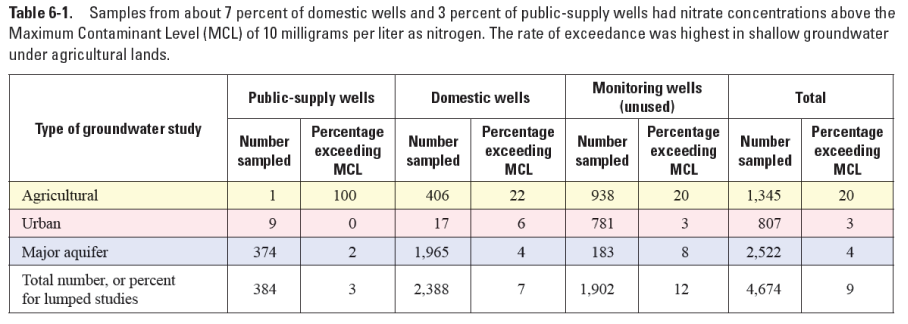
How the table was made:
The table shows the percentage of wells exceeding the maximum contaminant level (MCL) of 10 mg/L for nitrate, for three ground-water study types (agricultural, urban, and major aquifers) and three types of water use (public supply, domestic, and “unused” or monitoring). Other water uses, such as irrigation, stock, and industrial, were excluded, as were wells in forested/reference areas. Nitrate exceedance percentages were calculated for each study type and water use grouping (for example, 22 percent of domestic wells in agricultural study areas exceeded the nitrate MCL). Exceedance percentages were also calculated by study type only and water use only; these results are shown at the bottom of the columns and at the end of the rows. For example, 3 percent of all public supply wells exceeded the MCL, and 20 percent of all wells in agricultural study areas exceeded the MCL. Finally, the overall exceedance rate for all study types and water uses (9 percent), shown in the bottom right corner of the table, was calculated by aggregating all 4,674 wells representing the above study types and water uses.
For more information contact:
Bernard T. Nolan, NAWQA Nutrient Synthesis
U.S. Geological Survey
12201 Sunrise Valley Drive
Mail Stop 413
Reston, Virginia 20192
Voice: 703-648-5666
Fax: 703-648-6693
Email: btnolan@usgs.gov